
Grand Teton National Park
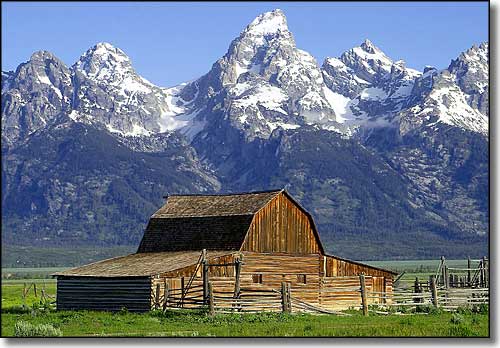
An old barn near Moose in Grand Teton National Park
Grand Teton National Park surrounds and preserves the abrupt, vertical rise of a world-renowned set of jagged, glacier-carved mountains. This incredible countryside and scenery attracts about 4 million visitors each year. The pristine glacial lakes at the foot of the mountains support extensive populations of wildlife, including the large number of elk, moose and bison that inhabit the Park and the nearby National Elk Refuge. The Teton Range itself is a little different in that the gneiss and granite at the core of the range is some of the oldest rock on Earth, while as mountains, the Tetons are among the youngest on Earth.
The Grand Tetons are also different from most mountain ranges in that there are no foothills that rise slowly to the mountains. That's because this mountain range is a fault block uplift that runs about 40 miles long and 7 to 9 miles wide. Jackson Hole is named that because it is a 55 mile long by 6 to 13 mile wide fault block that was displaced downward about 30,000' from the corresponding rock layers in the Tetons. Erosion that has occured since the uplift/drop has worn the mountains down while filling the dropped block zone with sediments, resulting in a total elevation difference today of 7,700' and less.
The Grand Tetons have been heavily glaciated but there are still 9 peaks here that rise above 12,000' in elevation. 7 of those peaks are between Cascade and Avalanche Canyons and make up the familiar Cathedral Group seen so often in photos of Grand Teton National Park. What's left of the Grand Tetons after all these years is a series of aretes and horns separated by the typical U-shaped valleys that drop below sharp cirques and end in glacial moraines. With this topography, the Grand Tetons are a textbook example of an alpine mountain range. Most of the lakes at the foot of the mountains were formed behind the rubble piles left by retreating Ice Age glaciers. The largest, Jackson Lake, covers some 25,540 surface acres and is up to 438' deep.
Elevations at Grand Teton National Park vary from 6,400 feet on the flat and sagebrush covered valley floor to 13,770 feet on the granite summit of Grand Teton. Winters here are snowy and bitterly cold, with the lowest temperature ever recorded being -63°F. The snow usually begins to build up in early November and can last well into April. Summers are reasonably warm but short. Consequently, if you want to visit in the summer, you'll want to plan ahead.
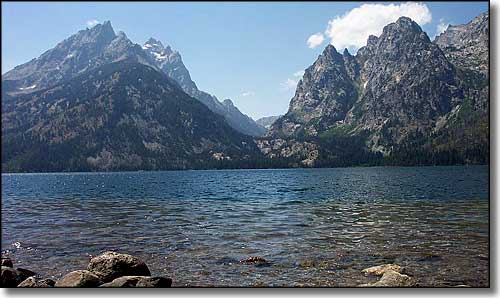
Cascade Canyon
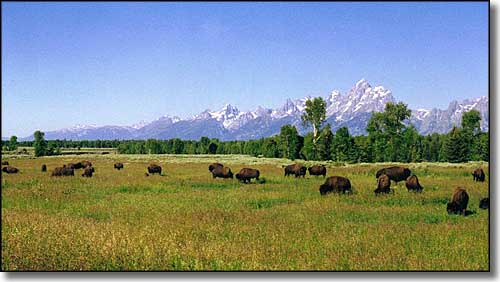
Part of the bison herd at Grand Teton National Park
Grand Teton National Park has many backcountry hiking trails in the mountain range and around the many lakes, but you'll need a permit for overnight camping. You don't need a permit to climb the peaks, unless you're staying overnight. The National Park offers several scenic byways, including the Jenny Lake Scenic Drive (a one-way road which skirts Jenny Lake), the Teton Park Road (which follows the base of the mountains from Jackson Lake Junction to Moose) and the Signal Mountain Summit Road (with an 800-foot climb to great panoramic views of the Tetons, Jackson Lake and the Jackson Hole valley.
Grand Teton National Park headquarters is at Moose, close to the Craig Thomas Discovery and Visitor Center. There are other visitor centers at Jenny Lake, Colter Bay and the Flagg Ranch. Except for Craig Thomas, the visitor centers are closed from sometime in September until May or early June. Park rangers staff the Craig Thomas Discovery Center every day except Christmas.
The extreme high temperature at Grand Teton National Park was 93°F and the extreme low was -46°F (although the record low for Grand Teton was -63°F). Average yearly rainfall is 10" and average yearly snowfall 191", which is why snow often keeps the area blanketed from early November to late April.

The Cathedral Group
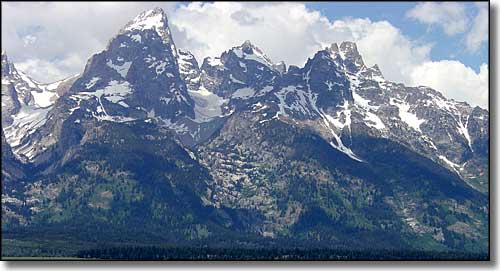
A closer view of Grand Teton Mountain itself
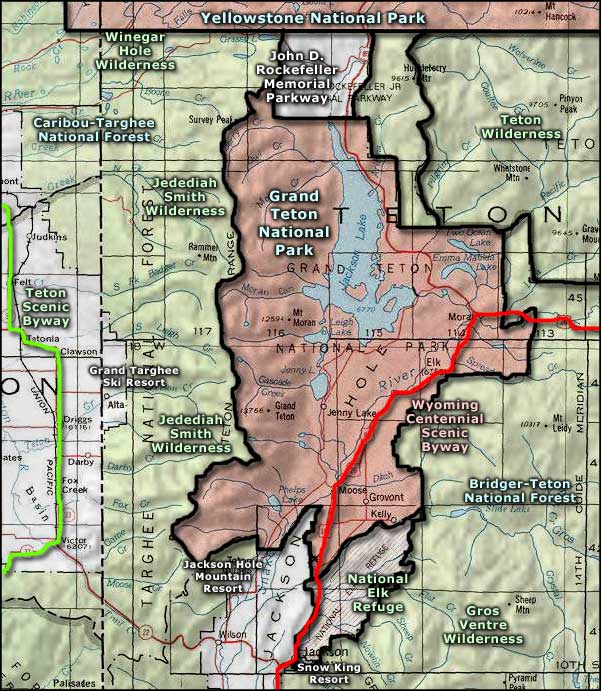
Map of the Grand Teton National Park area
To return, use the Back button of your browser.
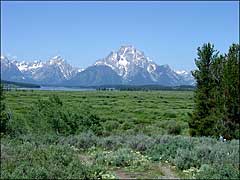 Mt. Moran |
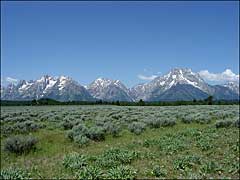 The Teton Range |
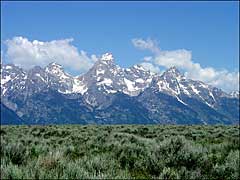 A closer view of Grand Teton |
Jackson Hole Mountain Resort - Grand Targhee Ski Resort - Snow King Ski Area
Bridger-Teton National Forest - Caribou-Targhee National Forest
Winegar Hole Wilderness - Jedediah Smith Wilderness - Teton Wilderness
Gros Ventre Wilderness - National Elk Refuge - Teton Scenic Byway
John D. Rockefeller Memorial Parkway
